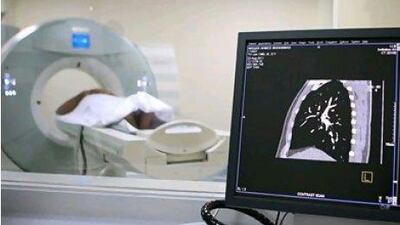Nations worldwide, including those in the Middle East and North Africa region, are grappling with the soaring costs of healthcare services.
Tomorrow's exclusives tonight:
Industry Insights e-newsletter Stay ahead of the pack and get the pick of the premium Business content straight to your inbox. Sign up
Few, if any, national healthcare systems have developed a successful formula for offering high-quality, universally accessible health care at a cost that is sustainable over the long haul.
As a result, they face spiralling expenses as they seek to provide affordable, high-quality and universal care services.
Healthcare spending in the UAE, for example, is expected to account for about 4 per cent of GDP in 2014 and has been growing, on average, by 15 per cent per year since 2005.
This puts pressure on government budgets that are already stretched thin; worse, it can jeopardise people's health, and even their lives, if care is not available or if they cannot afford it.
Hospitals have a major role to play in controlling these costs and keeping care affordable.
They represent the largest portion of national healthcare expenditures, and their supplies - both medical and non-medical - account for at least 30 per cent of their costs. It seems obvious, then, that hospitals should be putting more focus on supply chain management (SCM) - a hospital's ability to obtain and dispose of any product or service that is needed to care for a patient, from PCs to bedpans to MRI machines.
But better SCM doesn't just cut costs; it can help hospitals deliver better care. Regional hospitals are frequently out of stock of critical items, such as supplies for cardiac procedures.
At the same time, hospitals often overcompensate after such shortages and buy too much, leaving themselves with unused products such as medicines that expire before they can be used.
Better SCM would address both of those issues and ensure that hospitals have the supplies they need - and only the supplies they need - when they need them.
To achieve this goal, hospitals must transform their supply chain into a collaborative and strategic function.
Administrators and clinicians need to work closely together to anticipate the need for medical and non-medical items as varied as drugs, gloves and medical equipment, and order them in a timely fashion.
This would allow a hospital to properly contract for its requirements with suppliers, negotiating maximum volumes to gain the most beneficial prices as well as ensuring the availability of these supplies when needed.
This collaborative ordering process would not only help to curb costs but would also boost efficiency and improve patient outcomes.
Hospitals in the Middle East face both greater challenges and greater opportunities in this regard than their global peers. Most hospitals have limited SCM capabilities; rather than actively planning, they react to requests for supplies from doctors and nurses.
Because many items are out of stock locally, it is difficult for SCM teams to support their hospitals in delivering high-quality care while controlling costs.
In light of today's regional healthcare crisis, it is imperative that hospital chief executives recognise and realise the potential from SCM. They need to first understand how the supply chains are currently performing, and where there is room for improvement.
They must rapidly revamp their SCM functions to be more strategic and collaborative, with an appropriate governance structure and processes to help clinicians understand the trade-offs involved in selecting products.
This is tricky territory for SCM teams, as clinicians are likely not to trust the supply chain function and assume that cost savings are its first priority.
As a result, SCM teams must take care to establish themselves as trusted partners who appreciate the importance of quality care.
Finally, hospitals must develop a comprehensive and customised supply chain strategy; hire individuals with specialised skills in managing hospital supply chains; and ensure that the hospital's leadership, including the chief executive, chief operating officer and chief medical officer, will support the strategy and the organisational changes necessary to implement it.
Contrary to popular belief, efficient delivery of services and quality of care are not mutually exclusive.
Quite the opposite: striving for quality drives costs down and leads to a virtuous cycle in which reducing costs and improving quality go hand in hand.
Gabriel Chahine is a partner, Jad Bitara principal and Thomas Pfeiffer a senior associate with Booz & Company

